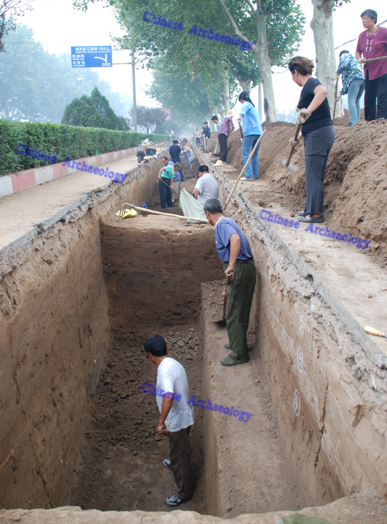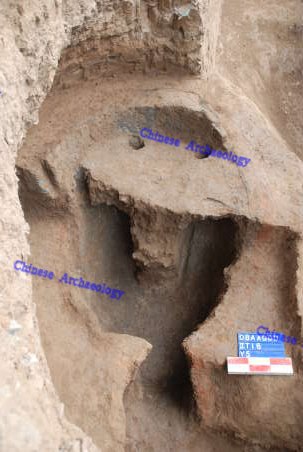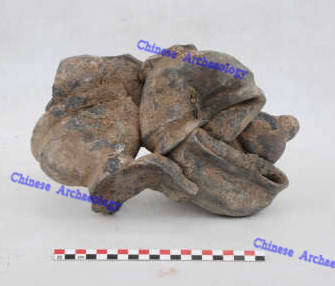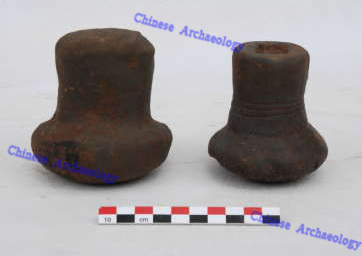Remains of a Pottery Workshop of the Shang Dynasty Found in Yinxu
Archaeologists from the Anyang Team of the Institute of Archaeology (CASS) excavated part of the Yinxu site as a cooperative effort of the infrastructure construction at the area in August, 2008.


Taking Zhongzhoulu as the boundary, they have named the area to its east Area I (remained unexcavated), while the area to its west Area II. Fifty ditches were excavated in Area II, each measuring two meters wide and ten meters long. When the field work ended in September, the archaeologists had finded eighty tombs, a hundred ash pits, twenty-two house foundations, ten kilns, three roads, three stoves, and two wells—all dating to the Shang Dynasty. In addition, five pit as well as brick tombs from the Tang through Qing Dynasties had also been excavated.


The ten kilns of the Shang Dynasty represent the most significant and unprecedented discovery in Shang archaeology. As a new group of data for reconstructing the development of ancient Chinese kilns, they help scholars clarify the basic configurations of the pottery kilns during the late Shang. All ten kilns have the same constituents, including kiln door, firebox, fire tunnels, props, furnace grill, kiln entrance, and kiln foundation. No kiln top and flue were found. Most of the kilns assume a gourd-ladle shape and consist of two sections. The semi-subterranean lower section includes the kiln door, firebox, firing tunnels, props, and furnace grill, whereas the upper section includes the kiln chamber, entrance, kiln top, and flue. The kiln chambers are built with rammed-earth adobe and straw plaster. While the exact shape and structure of the top as well as the location of the flues remain unknown, we hypothesize that the tops may have been circular or oval in shape and the flues may have located at the outer rim of the tops, on the basis of the fact that most of the kiln chambers are circular or oval in shape and the tops demand some components of the cistern sort.


In the vicinity of these kilns and inside the house foundations were found numerous discarded pottery wares and fragmentary kiln walls, together with pottery-making devices. These remains as well as their density occurrence in the same location indicate that this area may have been a pottery workshop of the Shang Dynasty. Because it is located in the southern part of the Huayuanzhuang Village at Yinxu, we name it “Pottery Workshop Remains at Southern Huayuanzhuang Village.” Among the waste and discarded pottery wares, the dou wares number the most, followed by the gui wares. The form of these wares indicates that they were from the first and the second phases of the Yinxu Culture.
Excavation has revealed that the workshop measures more than five hundred meters from east to west. Its area of distribution measures more than six ha. Hence the largest Shang kiln ever discovered so far and decisive for future reconstruction of the configurations of the Yinxu site.
To the east of this site is a Shang site known as “Shang bronze-casting workshop at the northern Miaopu by the Anyang Railway.” Between the two sites numerous leftover bits and pieces and waste materials—remains from bone tool making during the Shang—have been found in recent years, suggesting the presence of a large-scale bone-making workshop in the area. All three workshop remains are situated to the south of the palatial and family temple areas at Yinxu. Standing next to each, they constitute the most important location of the Shang handicraft industry.
Translated by Wang Yudong

